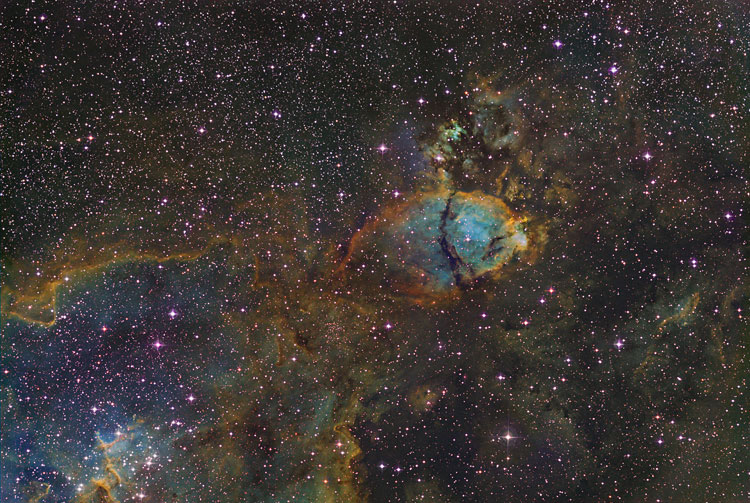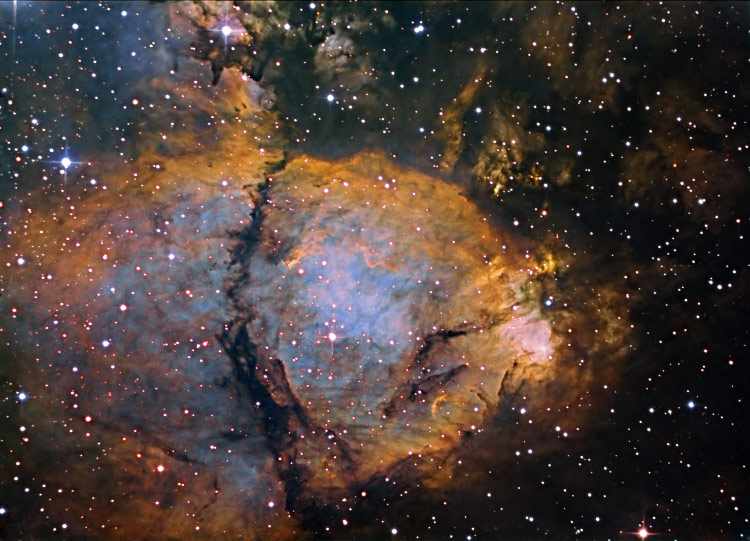Part of Heart Nebula (IC 1795, NGC 896)

Clic here for 60% size 2370x1590 (1300 kB)
About this Image
|
|
The Heart Nebula, a huge emission area dubbed IC 1805 looks, in whole, like a human heart.
The nebula glows brightly in red light emitted by ionized hydrogen.
IC1805, The Heart Nebula, is the large emission nebula in the lower left part of the frame and IC 1795 is the bright projection with the crossing dust lane near the right top.
The bright cluster near the center of IC1805 formed about 4 million years ago and caused its expansion into IC 1975, causing a more recent burst of star formation some 100,000 years ago.
The complete IC1805 is about 300 light years across.
The red glow and the larger shape are all created by a small group of stars near the nebula's center, also named Melotte 15, seen in the lower left corner of this image
The image has been taken with narrowband filters for Sulphur, Hydrogen, and Oxygen, representing each red, green and blue, the so called Hubble palette.
This emission nebula is situated at a distance of 7500 light years. North is up.
Below you find a crop on the center of the above image taken at f/10 in 20/40% size.
This close-up view shows IC 1795 with its brightest part (to the right) being separately classified as NGC 896, because it was the first part of this nebula to be discovered.
|

Technical Details
|
| Optics |
410mm cassegrain in corrected primary focus at f/3, crop at f/10
|
|
Mount |
MK-100 GEM |
|
Camera |
SBIG STL-11000M at -25C, internal filter wheel |
|
Filters |
Astronomik H-alpha, O-III, S-II |
|
Date |
Dec 14, 2006 f/10; Feb 04, 2007 f/3. |
|
Location |
Wildon/Austriay |
|
Sky Conditions |
mag 5 sky, raw FWHM 2.5 ", temperature 5 degree C; |
|
Exposure |
S-II:Ha:O-III = 60:60:60 min (30 min subexposures) |
|
Processing |
Image aquisition in Maxim DL 4.65; preprocessing in CCDstack;
Curves, color balance, mild unsharp mask, highpass filter in Photoshop; |
